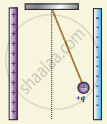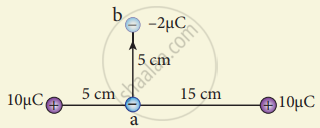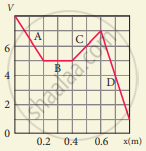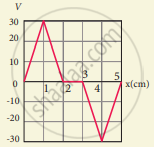Advertisements
Advertisements
प्रश्न
Give the relation between electric field and electric potential.
उत्तर
Consider a positive charge q kept fixed at the origin. To move a unit positive charge by a small distance dx in the electric field E, the work done is given by dW = -E dx. The minus sign implies that work is done against the electric field. This work done is equal to an electric potential difference. Therefore,
dW = dV.
(or) dV = -Edx
Hence E = `"dV"/"dx"`
The electric field is the negative gradient of the electric potential.
APPEARS IN
संबंधित प्रश्न
Two points A and B are maintained at a potential of 7 V and -4 V respectively. The work done in moving 50 electrons from A to B is ______.
What is an equipotential surface?
Define ‘electrostatic potential energy’.
Derive an expression for electrostatic potential due to a point charge.
Derive an expression for electrostatic potential energy of the dipole in a uniform electric field.
Suppose a charge +q on Earth’s surface and another +q charge is placed on the surface of the Moon,
- Calculate the value of q required to balance the gravitational attraction between Earth and Moon
- Suppose the distance between the Moon and Earth is halved, would the charge q change?
(Take mE = 5.9 x 1024 kg, mM = 7.348 x 1022 kg)
Draw the free body diagram for the following charges as shown in the following figure.

Draw the free body diagram for the following charges as shown in the following figure.

The electrostatic potential is given as a function of x in figure (a) and (b). Calculate the corresponding electric fields in regions A, B, C and D. Plot the electric field as a function of x for figure (b).
A point charge of +10 µC is placed at a distance of 20 cm from another identical point charge of +10 µC. A point charge of -2 µC is moved from point a to b as shown in the figure. Calculate the change in potential energy of the system? Interpret your result.



